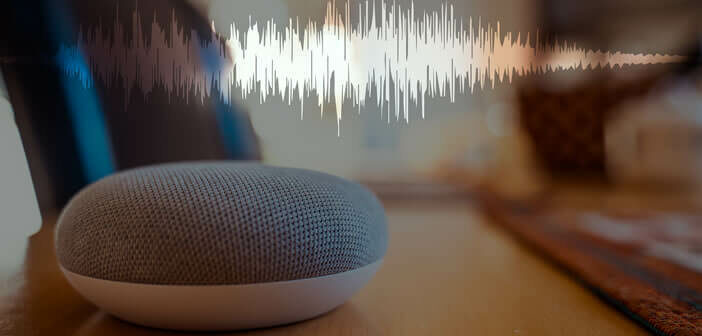
Does your Google smart speaker tend to activate on its own when you say a sentence? Conversely, the latter refuses to light up when you invoke the magic formula Ok Google? Whatever your problem, this guide will find a way to reduce or increase the microphone sensitivity of your Google smart speaker..
Refine the voice detection of the connected speaker
I won't teach you anything by telling you that Google's smart speakers are selling like hot cakes. The first year of its launch, the American firm even boasted of selling one unit every second.
The success of the connected speaker from Google (Home, Min or Nest) rests above all on its price but also on its ease of use. It's very simple, she knows how to do everything (write a shopping list, control the television, plan the day, listen to music, manage the lights). The potential of this tool is limitless..
Unfortunately the connected speaker still has some flaws. Some users criticize it in particular for activating too easily in a noisy environment. You have very probably heard the Google Assistant wake up when you say a phrase relatively close to the keyword Ok Google.
The reverse is also true, alas. The enclosure sometimes refuses to respond to the requests of their owners. In the vast majority of cases, the problem comes directly from the sensitivity of the microphone..
Adjust the sensitivity of your Google Home microphone
Not many people know it, but the smart speaker from Google has an option to adjust the sensitivity of the microphone. Concretely this means that you will be able to modify the way in which the microphone picks up your voice throughout your house.
If your device is located in a quiet area, a little far from the main living rooms, it is recommended to increase the sensitivity of your connected speaker. This will prevent your devices from accidentally activating with phrases like OK Google.
If, on the other hand, the assistant has trouble hearing you and is in a high traffic area (noisy environment), the device's sensitivity must be increased in order to increase voice detection.
There are different ways to adjust the audio sensitivity of a connected speaker. But regardless of the method chosen, the operation must be carried out from the Home application installed on your phone.
- Open the Google Home app on your smartphone
- Select the device you want to change the sensitivity for (Google Home, Home Mini, Home Max, Nest, Nest Hub)
- Click the Settings icon in the upper right corner (gear icon)
- Scroll down the window
- Tap the Responsiveness function of the Ok Google keyword
- Drag the slider to the left (less sensitive) so that your speaker doesn't unintentionally trigger
- Move the slider to the right (more sensitive) so that your device can more easily detect your voice even when the sound environment is poor
- Slightly move away from the speaker and take a test
- Repeat the operation if necessary
You can now place your smart speaker anywhere in your home without worrying about location. Likewise, if you have several connected devices, you no longer risk waiting for them to be triggered simultaneously when speaking your voice commands.
Right now, the Ok Google keyword responsiveness option is available on most speakers. Importantly, the audio sensitivity of your Google Home speaker can change over time. Indeed, Google reserves the right to modify the sensitivity of the speakers via software updates.